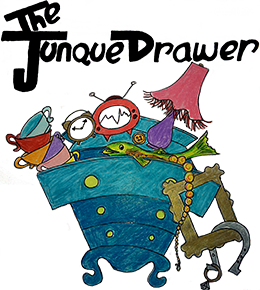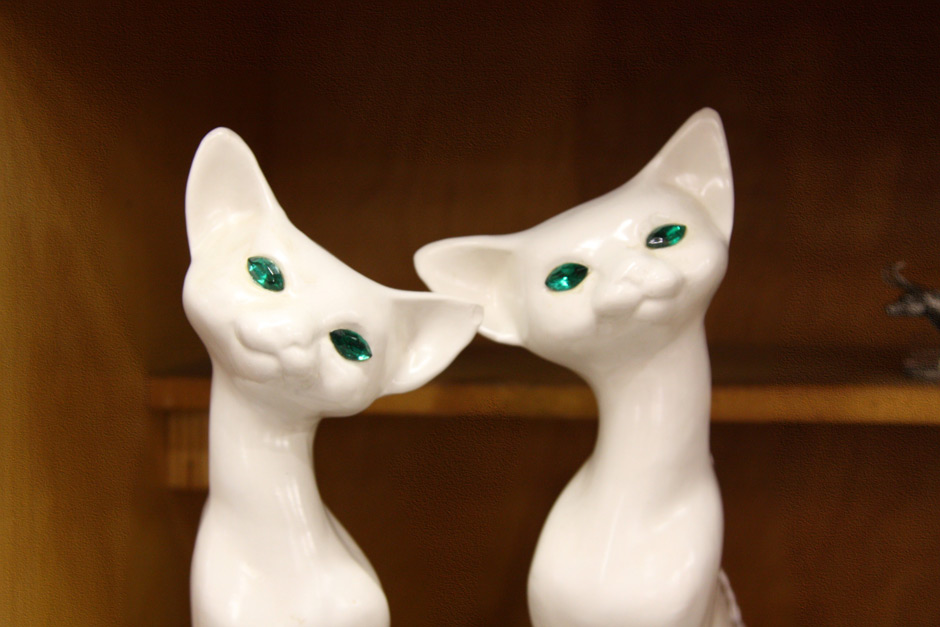STONES USED IN NATIVE AMERICAN JEWELRY
Native Americans have been making jewelry for several generations and use many different stones and shells to add color and accentuate these decorative pieces. Many metaphysical properties are also attributed to these stones. People will wear particular stones for protection, spiritual transformation, and good luck. Below is a guide to some of the materials used in the jewelry carried here at The Junque Drawer.
Turquoise: Colors vary from light blue to deep rich blues and greens. Turquoise mines produce both green turquoise and blue turquoise in varying shades. We have turquoise from the Royston mine in Nevada, Kingman mine in Arizona, Sleeping Beauty mine in Arizona, and much more. Light blue turquoise can darken if exposed to soaps and chemicals because it is more porous than dark blue turquoise.
White Buffalo Turquoise: A white stone with black matrix, found in turquoise mines. The Royston mine in Nevada and two mines in Globe Arizona have veins of it. It tests as turquoise but because it is not blue it is now referred to as simply “white buffalo.” There are other white turquoise called Crazy Horse or Wild Horse. It is white with a brownish matrix. Both have become much harder to find.
Lapis Lazuli: Also referred to as “Lapis.” Dark rich blue in color, a stone that is getting harder to come by and more costly. Lapis is found in many parts of the world including Afghanistan, Chile, Russia, Pakistan, Canada, California, and Colorado.
Blue Denim Lapis: A light blue color that resembles jeans. It is very popular as everyone wears jeans and is increasingly more difficult to find. It has been extremely popular for the past 20 years.
Malachite: Rich dark green color mostly with striations through the stone. It is found all over the world, including Arizona.
Opal: We have laboratory grown opals in many colors including blue, pink, and white. Natural opals are very costly and are not used in Indian jewelry due to availability and cost. Opal jewelry should be treated gently. Do not put in detergents or soaps.
Coral: Color ranges from orange to deep red. It is found in the Mediterranean Sea and has been called “Red Gold” by native americans as it is more costly than turquoise. Coral has become scarce in recent years.
Spiny Oyster Shell: A near cousin of coral, also orange to red in color. Sometimes it can be pink or yellow as well. There is also a variety of purple spiny oyster which is a nice deep purple color. It is found in the Mediterranean Sea and other oceans including Baja Mexico. Spiny oyster is much less costly than coral.
Gaspeite: A very distinct lime green color. Comes from Australia but is getting harder to find as many mines have closed.
Sugilite: Light to dark purple color easily mistaken for purple spiny oyster. It can come from South Africa, Japan, and Canada. Said to aid in spiritual balancing and healing. Popular among new age practitioners.
Black Onyx: Deep black color. Much comes from Mexico and can be easily mistaken for Jet.
Jet: Dark solid black color. A derivative of coal, found in the southwest and used by the Zuni in their inlay work. Not to be mistaken for black onyx.
Mother-of-Pearl: A white shell used primarily for inlay work. It is found in all oceans.
Pink Mussel-Shell: A pink shell from bodies of fresh water such as the Mississippi river. Once very popular and plentiful, it is rarely showing up now.
Tiger Eye: Rich golden color with striations said to resemble a tiger’s eye. Much found in Africa. Rarer is red and blue tiger eye.
Jasper: Comes in all colors . We have some tan and brown jasper. Found all over the world.
Zuni are noted for their fine inlay work, needlepoint, and pettipoint. Inlay is done either in channel inlay, each stone set in a silver channeling; or stone on stone, each stone cut and set side by side. Raised inlay is also a Zuni technique. Needlepoint is the tiny, finely cut sets with points on the ends. Pettipoint is a round or snake eye cut of the stone, small and well matched.
The Navajo also do much inlay work and it will be hard for you to tell the difference unless you work with it a lot. Another Navajo style is a set stone or Cabachon (cab) in a bezel often with stampings in the silver, additions of rope trim, and silver raindrops. Navajos make the all silver stamped bracelets and earrings.



No Comments